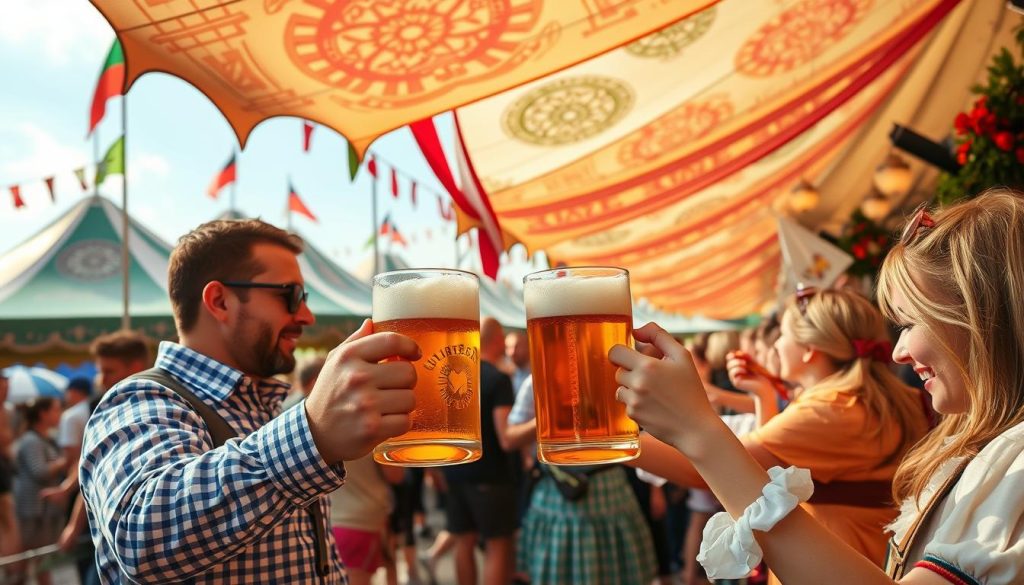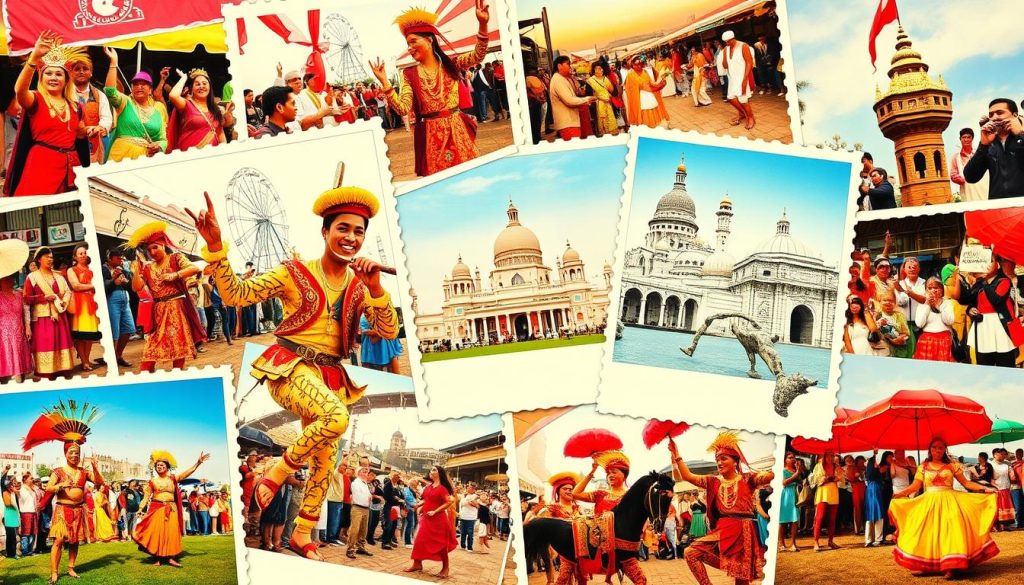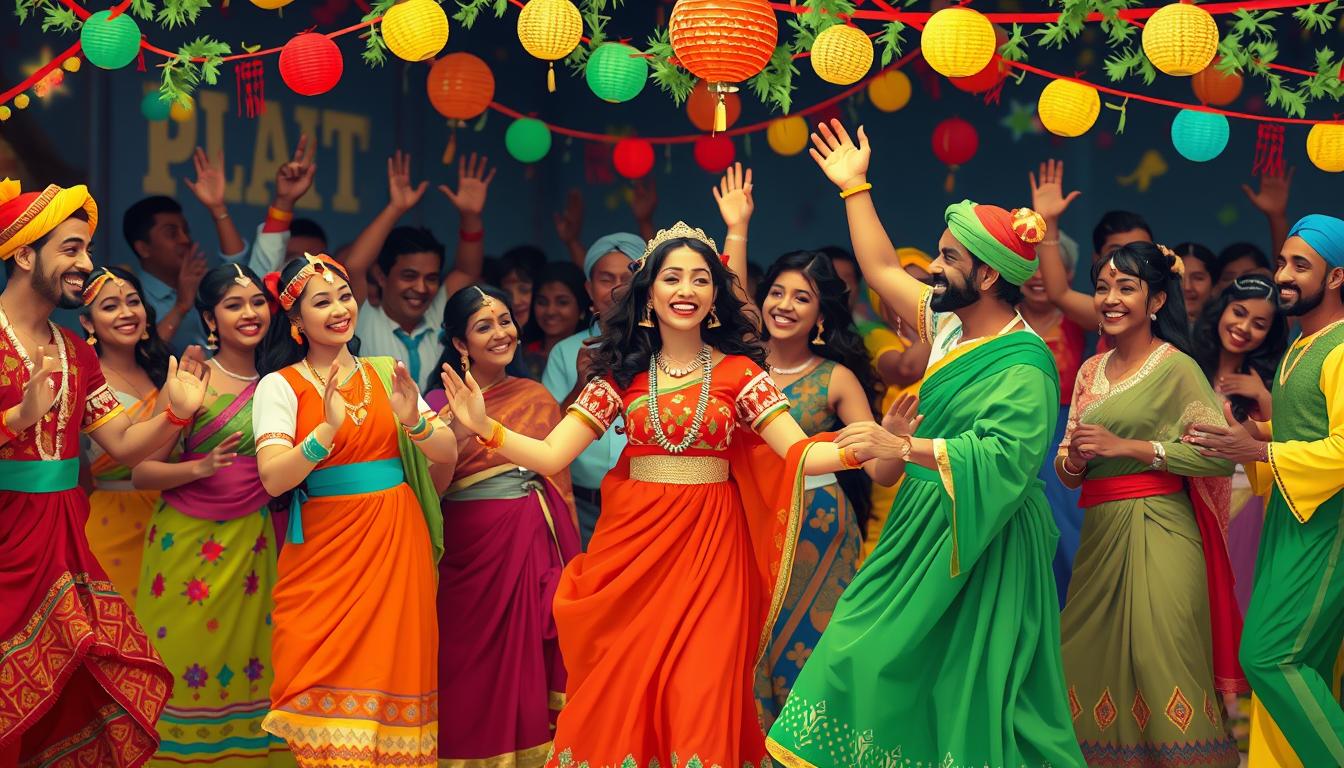Ever wondered what it’s like to dive into the vibrant parades of different cultures? Cultural festivals let you see the heart and soul of nations. They offer unforgettable experiences that go beyond just looking around. From Brazil’s Rio Carnival to India’s Diwali, these events show the true spirit of human celebration and heritage.
These festivals are full of color, history, and grandeur. They promise to spark your curiosity and deepen your understanding of the world. Are you ready to see the beauty and significance of these global celebrations? Let’s check out some of the most iconic cultural festivals you must see once in your life.
Quick recommendation: Start saving on hotels with Member Prices – just sign in or join for free. https://expedia.com/affiliates/wild_bliss_explores/agat85
Key Takeaways
- Cultural festivals offer a deep connection to the heritage and traditions of different countries.
- Rio Carnival in Brazil is famous for its vibrant parades and rich history.
- Diwali in India showcases mesmerizing lights and deep-rooted customs.
- Oktoberfest in Germany provides a taste of Bavarian traditions and hearty celebrations.
- Chinese New Year is marked by significant rituals and delicious culinary delights.
- Holi, celebrated in India and Nepal, is known for its colorful and interactive activities.
- La Tomatina in Spain and Japan’s Cherry Blossom Festival are also must-see events for global travelers.
Introduction to Cultural Festivals
Cultural festivals are lively events that show off the traditions and customs of a place. They are key in keeping cultural heritage alive. They also let people dive deep into cultural immersion.
What Are Cultural Festivals?
Cultural festivals are all about celebrating the special parts of a community’s life. They can be tied to religion, the harvest, or important historical events. This lets people feel what traditional celebrations are like up close.
These events often have traditional music, dance, food, and rituals. They give a full taste of a community’s culture.
Why Attend Cultural Festivals?
Going to cultural festivals has many perks for a festival-goer. They let you dive into the ways of another culture. This helps with global understanding.
These festivals also help with cultural exchange. This builds respect and appreciation between people. So, those who go away with new views and memories. They’ve enjoyed unique fun and celebrations that stand out.
Rio Carnival, Brazil
Rio Carnival is a key event in Brazilian culture, attracting millions to Rio de Janeiro yearly. It’s a festival filled with music, dance, and stunning displays. This makes it a memorable experience.
History of Rio Carnival
The Rio Carnival started in the 18th century with Portuguese immigrants. They brought masquerade balls and parades. Over time, it mixed African, Indigenous, and Portuguese cultures.
By the 20th century, it turned into a big event. It’s famous for its samba parade and colorful outfits.
Main Attractions at Rio Carnival
The samba parade at the Sambadrome is a big highlight. Samba schools compete, showing off their music, floats, and costumes. It’s a stunning display of Brazilian culture.
Street parties called ‘blocos’ are also key to the carnival. They fill Rio’s streets with live music and dancing. People wear their best colorful outfits. There are also grand balls and themed parties across the city for more fun.
A quick recommendation: Buy new shoes, boots, sneakers and accessories from the collection. Contemporary designs, original spirit. Free shipping and 2 years warranty.https://yazing.com/deals/camper/Agatha85
Diwali, India
Diwali, known as the Festival of Lights, is a major festival in India. It’s deeply rooted in Indian culture. This Hindu celebration marks the victory of light over darkness and good over evil.
Families light up their homes with diyas and colorful rangoli during Diwali. Fireworks fill the sky, symbolizing joy and victory. This creates a magical scene.
Diwali is filled with social traditions. People clean and decorate their homes, wear new clothes, and exchange gifts. Sharing sweets and delicacies brings communities closer together.
Diwali has deep ties to Hindu mythology. It’s linked to stories like Lord Rama’s return and the celebration of Goddess Lakshmi. These stories add to the festival’s cultural importance.
Diwali is more than just lights. It’s a celebration of Indian tradition that unites people in joy and harmony.
Oktoberfest, Germany
Oktoberfest in Munich is the biggest beer festival worldwide, attracting millions. People come to dive into German culture. They enjoy music, food, and a vast beer selection.

What to Expect at Oktoberfest
At Oktoberfest, you’ll find a lively scene with many tents. Each tent offers its own vibe. Expect to hear oompah bands and traditional dances.
Food is a big deal too. You’ll find traditional Bavarian foods like pretzels, sausages, and roast chicken.
Bavarian Traditions at Oktoberfest
People wear traditional Bavarian clothes, like lederhosen and dirndls. This adds a special touch to the event. The tents are decorated beautifully, hosting thousands of people.
There’s more than just beer and food. There are also activities for families. Oktoberfest in Munich is a great way to experience German culture.
A quick recommender: Acorns helps you save & invest. Invest spare change, bank smarter, earn bonus investments, and more! Get started.https://yazing.com/deals/acorns/Agatha85
Chinese New Year, China
The Chinese New Year, also known as the Lunar New Year or Spring Festival, is a big deal in Chinese culture. It marks the start of the new lunar calendar. Families come together for fun celebrations filled with traditions.
Significance of Chinese New Year
Chinese New Year is very important. It’s about honoring ancestors, family, and welcoming a prosperous year. People in China do many customs to wish for good luck, health, and happiness in the new year.
Key Celebrations During Chinese New Year
The Chinese New Year is full of fun celebrations. These include:
- Traditional dances: Dragon and lion dances chase away evil spirits and bring luck.
- Fireworks: Big fireworks shows light up the sky, chasing away evil and welcoming the new year.
- Red envelopes: “Hongbao” envelopes filled with money are given to kids and young adults for luck.
Culinary Delights of Chinese New Year
Food is a big part of Chinese New Year. Families make special dishes that mean something:
- Dumplings: Dumplings mean wealth and prosperity.
- Sticky rice cake: This cake stands for progress and moving forward.
- Whole fish: Fish means there will be plenty of food.
These foods show the wish for fortune and happiness all year. Family gatherings are key, bringing people together to enjoy the celebrations.
Holi, India and Nepal
Holi is known as the Festival of Colors. It’s a vibrant and joyous event in South Asian culture. People in India and Nepal celebrate it with great enthusiasm.
Origins of Holi
The story of Holi begins with Prahlad and Holika. Prahlad was a big fan of Lord Vishnu. His father, King Hiranyakashipu, wanted to kill him because of his faith.
Holika, the king’s sister, was supposed to burn in fire with Prahlad. But Prahlad survived, and Holika did not. This story shows how good can beat evil.
Holi welcomes spring and says goodbye to winter. It’s a time to celebrate the colors of the season and hope for a good harvest. People from different backgrounds come together, forgetting their differences to enjoy the festival.
Interactive Holi Activities
The festival is full of fun activities. People do things like:
- Throwing ‘Gulal,’ a colorful powder, at each other.
- Using water guns and balloons filled with colored water to soak friends and family.
- Dancing to music, with traditional drummers, or ‘Dhol’ players.
These activities bring people together in joy and unity. Holi reminds us of the beauty of South Asian culture. It’s a time for people to celebrate together with colors.
La Tomatina, Spain
La Tomatina is known as the world’s biggest food fight. It happens every year in Buñol, Spain. Thousands join this fun event, making the town red with tomatoes.
The first La Tomatina was in 1945, when young people had a spontaneous tomato fight during a parade. It was so popular, it became an official event. Now, it’s one of the most famous events in the world, with rules to keep everyone safe.
It takes place on the last Wednesday of August. Over 100 metric tons of tomatoes are brought in. When the cannon goes off, everyone joins the fight, wearing goggles and snorkels.
But it’s not just about throwing tomatoes. There’s music, dancing, and parades too. It’s a celebration of culture and community in Buñol.
“La Tomatina is not just a festival; it’s an unforgettable experience where you can truly immerse yourself in Spanish customs and enjoy one of the most participatory events on the planet.”
If you want a unique summer adventure, don’t miss La Tomatina. Bring your friends, get your tickets to Buñol, and join the world’s biggest tomato fight.
Cultural Festivals Around the World You Shouldn’t Miss
Cultural festivals around the globe are a treasure trove of experiences. They let us dive deep into local customs and heritage. These events are more than celebrations; they’re global cultural milestones filled with joy.

Why These Festivals Stand Out
These festivals are known for their grand scale, rich history, and unique experiences. They showcase the cultural richness of a region, attracting visitors from all over. For example, the Rio Carnival in Brazil dazzles with its vibrant parades and samba music. Diwali in India shines with thousands of lamps, symbolizing light over darkness.
Unique Aspects of Each Festival
- Rio Carnival: Known for its massive street parties and extravagant floats.
- Diwali: Marked by beautifully lit homes, fireworks, and sweets.
- Oktoberfest: Famous for its lively beer tents and traditional Bavarian attire.
- Chinese New Year: Celebrated with lion dances, red envelopes, and delicious food.
- Holi: Characterized by colorful powder fights and water festivities.
- La Tomatina: A fun and messy tomato-throwing event.
Best Times to Visit
To enjoy these global celebrations fully, planning is key. The Rio Carnival happens in February or March, and Diwali in late October or early November. Oktoberfest starts in late September and ends on the first weekend of October. The Chinese New Year falls between January 21 and February 20. Holi is in March, and La Tomatina on the last Wednesday of August. Make sure to mark these dates and join in the cultural festivities!
Japan’s Cherry Blossom Festival
Every spring, Japan comes alive with the Cherry Blossom Festival, or Sakura season. This tradition welcomes spring and brings people together for fun hanami parties. It’s a time for families and friends to enjoy each other’s company.
The tradition of hanami goes way back to ancient times. Back then, aristocrats would admire the beauty of cherry blossoms and write poems under the blooming trees. Now, it’s a big national event that attracts people from all over the world.
Today, hanami parties are lively events under the cherry blossoms. People bring picnic blankets, share food, and toast to the beauty above. The sight of pink and white blossoms against a blue sky is unforgettable.
The festival also features cultural events like traditional dances and tea ceremonies. These activities let visitors learn about Japanese traditions. They make the festival a top spot for anyone visiting Japan in spring.
“The beauty of a cherry blossom is a fleeting moment; cherish every petal as it falls, dancing in the breeze.”
The Cherry Blossom Festival in Japan is a beautiful celebration of nature and tradition. It’s a tradition that touches hearts every year, around the world.
Conclusion
Cultural festivals are a big deal in our world. They bring people together from all over, offering a chance to explore different cultures. By joining in, you get to see how people live and celebrate in unique ways.
Imagine dancing in Rio during Carnival or watching the Cherry Blossoms bloom in Japan. These events are more than just fun; they’re chances to make memories that last a lifetime. They help us connect with others and grow as individuals.
When you join in festivals like Brazil’s Carnival or Chinese New Year, you dive into a world of flavors and traditions. It’s a way to experience the beauty of global cultures firsthand. So, get ready for an adventure filled with joy, learning, and unforgettable moments.
A quick recommender: Exclusive discounts and the latest trends at SHEIN — Women’s Dresses, Tops, Bottoms, Shoes, Plus Size and more. ✓ Free Shipping ✓ App only.https://yazing.com/deals/shein/Agatha85

